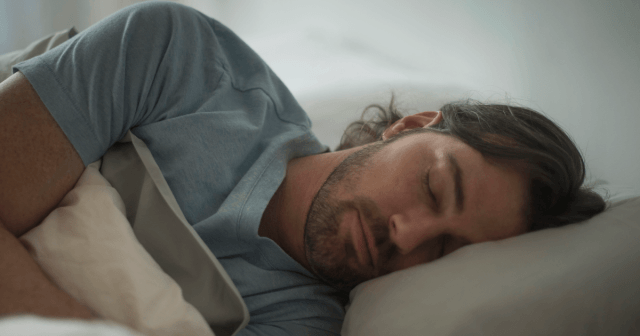If you’ve just got your hands on our latest premium multi-sport watch, Polar Vantage V2, you may be wondering what the difference is when it comes to Nightly Recharge vs Recovery Pro. Who knew your rest and recovery could be measured in different ways? Well, we did. Polar’s very own recovery specialist, senior researcher Ph.D. Daniela Schäfer Olstad chatted to us about the differences and synergies between these two options so you know which one is best for you.
WHY DOES POLAR VANTAGE V2 FEATURE TWO RECOVERY MONITORING OPTIONS?
There are different needs and different preferences for measuring recovery among users. Polar provides a solution for everyone. Both recovery tracking solutions Nightly Recharge™ and Recovery Pro™ are based on top-notch science and make use of generally accepted tools for measuring training, stress, and recovery.
Can I use both of these recovery features every day? Or do I need to choose one option?
You must choose in the Recovery tracking settings whether you want to use Nightly Recharge vs Recovery Pro. You can at any time switch to the other recovery tracking solution if you changed your mind. If you selected Nightly Recharge™, you can still do Orthostatic tests to assess your cardio recovery level, which forms the core of the short-term recovery feedback within Recovery Pro™.
What are the key differences between Nightly Recharge vs Recovery Pro?
In Recovery Pro™, the autonomic control of the heart is assessed with the Orthostatic Test. This test measures your resting heart rate variability (RMSSD rest) and standing heart rate variability (RMSSD stand) with a heart rate sensor worn around your chest. These values are then compared to your individual 28-day baseline.
To make sure that your results are as reliable as possible, we recommend taking the Orthostatic Test in the morning in similar conditions each time. If the heart rate variability values are within your normal range, your cardio system is recovered. If either of the two heart rate variability values is below or above their normal range, your recovery is considered incomplete.
This is called cardio recovery level and it forms the core of the short-term recovery feedback. In addition, Recovery Pro™ also gives you feedback on whether you’ve been training too much, too little, or just right recently. It does this by combining your training history with your long-term cardio recovery level and your perceived recovery (evaluated with questions about muscle soreness, fatigue, and sleep).
Nightly Recharge™ status consists of ANS charge and sleep charge. ANS charge looks at how well your autonomic nervous system calmed down during the first hours of your sleep compared to your usual level. Your individual 28-day baseline is used as a point of comparison.
ANS charge is formed by combining heart rate, heart rate variability (RMSSD), and breathing rate, which are measured automatically with an optical sensor from your wrist during roughly the first four hours of your sleep.
Heart rate has the biggest influence when forming ANS charge and breathing rate the smallest. The higher the ANS charge, the better your cardio system has recovered. This is because increased heart rate and decreased heart rate variability are considered to indicate poor recovery while decreased heart rate and increased heart rate variability are considered to indicate good recovery.
Sleep charge is built on Polar sleep measurement that automatically measures the amount and quality of your sleep each night. It combines the amount and quality metrics into a single number, called sleep score. Sleep charge reflects how well you slept by comparing your sleep score to your usual level. Your individual 28-day baseline is used as a point of comparison. Based on your Nightly Recharge™ status, you get personalized daily tips on exercise, sleep, and regulating energy levels.
Are they designed for different types of people (i.e. fitness enthusiast vs. pro athlete)?
Automatically assessing the autonomic control of the heart during the night is the most convenient way of measuring recovery as there is no effort needed by the user. Thus, if you’re a regular trainer looking for a balance between training and other commitments – such as work, family, and friends – you might want to go with Nightly Recharge™.
However, if you are highly performance-oriented, Recovery Pro™ could be your choice. The reason is that in athletes with a resting heart rate below 60 bpm, a saturation effect of cardiac parasympathetic receptors is likely at rest, making it difficult to track training adaptations. Some studies using the Orthostatic Test only observed changes in RMSSD with training overload in standing and not in a supine position, suggesting that the standing after an orthostatic challenge is the best method to monitor training status in athletes.
Moreover, as an athlete, you probably don’t mind the extra effort of putting a heart rate sensor around your chest and invest four minutes for performing the orthostatic test and one minute to answer the perceived recovery question.
WHAT SIMILARITIES DO THEY HAVE?
Recovery Pro™ and Nightly Recharge™ have a common foundation. They both assess the function of the autonomic nervous system (ANS). The autonomic control of the heart changes in response to increased training load and mental stress. Measuring heart rate and heart rate variability is considered a reliable means to indirectly estimate the autonomic control of the heart.
Both features make use of the same heart rate variability metric (RMSSD, Root Mean Square of Successive Differences in beat-to-beat intervals) which reflects the activity of the parasympathetic branch of the autonomic nervous system.
Despite the common foundation, Recovery Pro™ and Nightly Recharge™ can sometimes give you different feedback. This is because they measure heart rate variability in different conditions and combine it with different metrics.
How does Recovery Pro work with Training Load Pro?
Cardio recovery level, assessed with Orthostatic Test, forms the core of the short-term recovery feedback within Recovery Pro™. In addition, Recovery Pro™ also gives you feedback on whether you’ve been training too much, too little, or just right recently.
It does this by combining your training history with your long-term cardio recovery level and your perceived recovery (evaluated with questions about muscle soreness, fatigue, and sleep). Training history is assessed with the cardio load status from Training Load Pro.
Cardio load status looks at how your Strain (Strain shows how much you have strained yourself with training lately by showing your average daily load from the past 7 days) compares to your Tolerance (describes how prepared you are to endure cardio training by showing your average daily load from the past 28 days) and estimates how your training is impacting your body.
If you liked this post, don’t forget to share so that others can find it, too.
Or give it a thumbs up!
I like this article
Please note that the information provided in the Polar Blog articles cannot replace individual advice from health professionals. Please consult your physician before starting a new fitness program.





